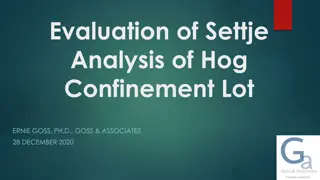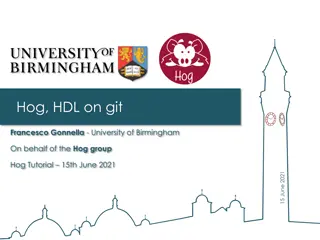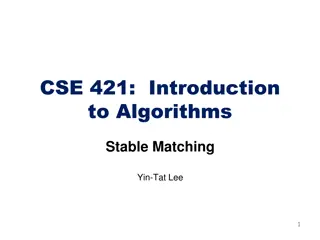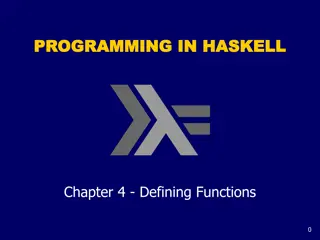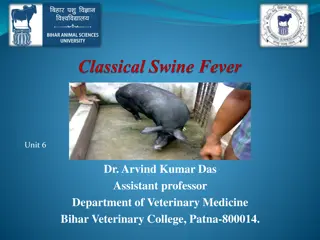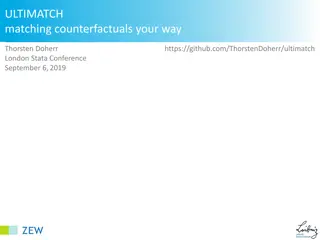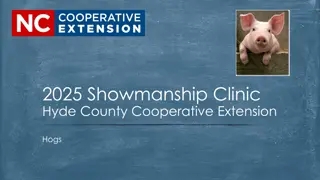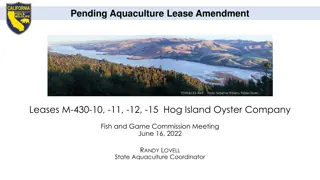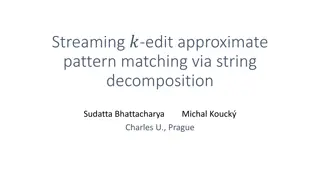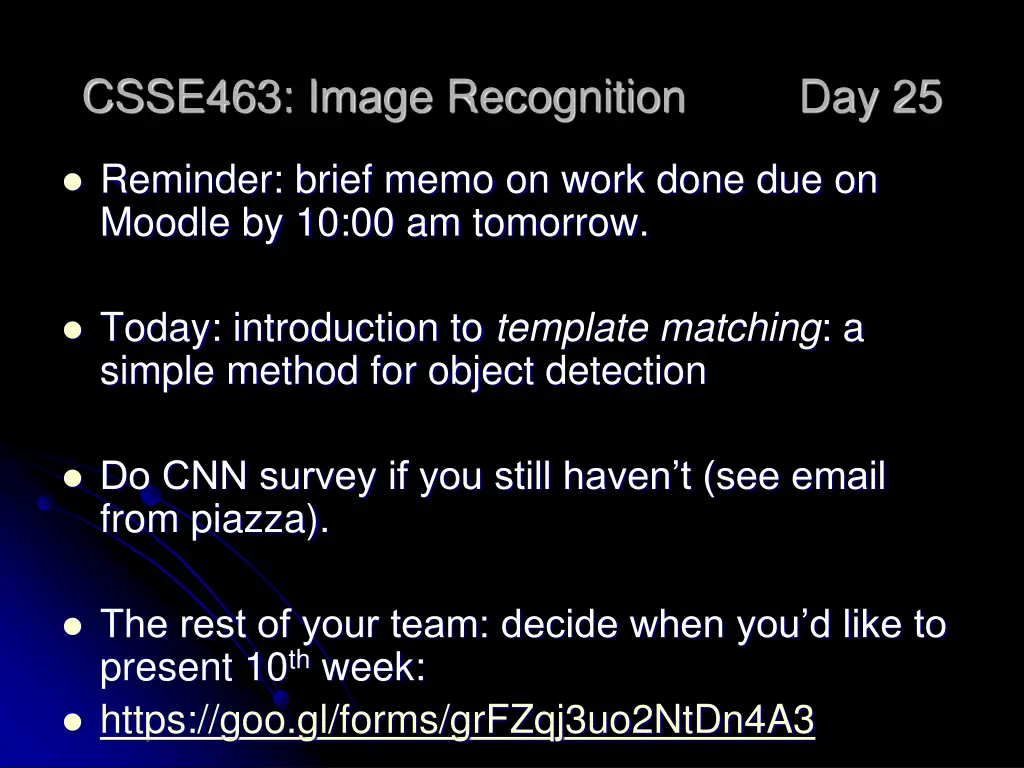
Introduction to Template Matching for Object Detection
Learn about template matching in image recognition, a method for object detection where an exact match of a template within an image is sought. Explore the algorithm, match criteria, correlation techniques, and other matching algorithms like Chamfering and neural networks.
Download Presentation

Please find below an Image/Link to download the presentation.
The content on the website is provided AS IS for your information and personal use only. It may not be sold, licensed, or shared on other websites without obtaining consent from the author. If you encounter any issues during the download, it is possible that the publisher has removed the file from their server.
You are allowed to download the files provided on this website for personal or commercial use, subject to the condition that they are used lawfully. All files are the property of their respective owners.
The content on the website is provided AS IS for your information and personal use only. It may not be sold, licensed, or shared on other websites without obtaining consent from the author.
E N D
Presentation Transcript
CSSE463: Image Recognition Day 25 Reminder: brief memo on work done due on Moodle by 10:00 am tomorrow. Today: introduction to template matching: a simple method for object detection Do CNN survey if you still haven t (see email from piazza). The rest of your team: decide when you d like to present 10thweek: https://goo.gl/forms/grFZqj3uo2NtDn4A3
Template matching (Sonka, 6.4) Idea: you are looking for an exact match of an object (described by a sub-image, a template) in an image Ideal world: it matches exactly
Template matching (Sonka, 6.4) Algorithm: Evaluate a match criterion at every image location (plus size, reflection, and rotation, if those variations are expected) A match is a local maximum of the criterion above a threshold Q1
Template matching (Sonka, 6.4) One match criterion: Correlation between the template and the image. Note: just use the template as a filter! Simplistic implementation Smarter implementation
Correlation Just the dot product between the template and a neighborhood in the image. Idea: high correlation when the template matches. Demo
Correlation Just the dot product between the template and a neighborhood in the image. Idea: high correlation when the template matches. Problem: always high correlation when matching with a plain bright region Q2-3
Correlation Just the dot product between the template and a neighborhood in the image. Idea: high correlation when the template matches. Problem: always high correlation when matching with a plain bright region Solution: Normalize the template and each region by subtracting each s mean from itself before taking dot product Q4-5
Other matching algorithms Chamfering (Hausdorff distance): http://www.cs.cornell.edu/~dph/hausdorff/hausdorff1.html Springs and templates (Crandall and Huttenlocher) http://www.cs.cornell.edu/~dph/papers/cvpr07.pdf Even neural nets (deep or not) need to operate at various scales/patches of the image to detect objects.
Edges are more robust features for detection than intensities Histogram of Oriented Gradients (HOG features) Sources: Guest lecture by Trenton Tabor, RHIT 12 Sonka, et al. text, section 10.6.3 N. Dalal and B. Triggs, "Histograms of Oriented Gradients for Human Detection", Proc. IEEE Conf. Computer Vision and Pattern Recognition, vol. 1, pp. 886-893, 2005.
HOG features work well for pedestrian detection Dalal and Triggs introduced it in 2005. Their work has been cited over 13,000 times! Used for object classification in 2006 We ll look at usage for digit classification Past CSSE463 teams have used for object recognition tasks
Matlab has clear docs and examples Matlab HOG documentation Matlab end-to-end digit recognition example How? 1. Preprocessing by binarizing images 2. Extract HOG features on training and testing sets 3. Train an ensemble of linear SVMs for multiclass classification Demo digit rec now
1. Calculate edge gradient magnitude and direction -1 0 1 Orientation histogram every 20 deg (9 bins) Compute for each cell (group of pixels) 1 0 -1
2. Repeat for each cell in block This yellow block has 2x2=4 non-overlapping cells, each 16 pixels. Orientation histogram for yellow block: 9 x 4 = 36 features Then normalize feature vector, ? ? = ?2+ ? For example, this gives unit length.
3. Repeat for each block of cells in the window Window has blocks of cells made of pixels. etc. 36/block x 9 overlapping blocks = 324 features Each block is normalized independently 324 features then sent to SVM to detect the object of interest in that window. https://www.mathworks.com/help/vision/examples/digit-classification-using-hog-features.html
Example of pedestrian classifier using HOG features https://www.youtube.com/watch?v=TzzJC 8sOe60&feature=youtu.be Showcasing Trenton s work: T. Tabor, Z. Pezzementi, C. Vallespi and C. Wellington, 'People in the Weeds: Pedestrian Detection Goes Off-road', in 2015 IEEE International Symposium on Safety, Security, and Rescue Robotics, Purdue University, West Lafayette, IN, 2015.
Sounds great. How do I start? Read the Matlab example. Try it out! Read about parameters and experiment with them as needed: Matlab HOG documentation

